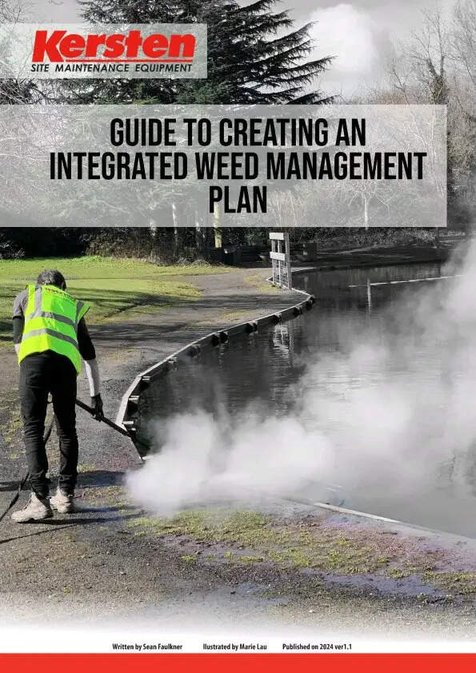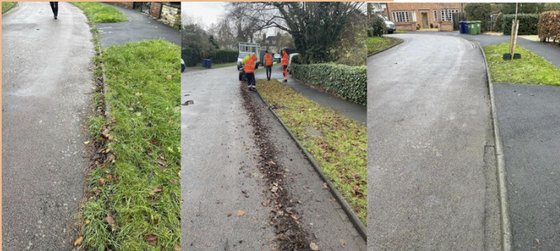Case Study: Why Cambridge City Council's Herbicide Reduction Plan will work
Cambridge City Council recently commited to a new Herbicide Reduction Plan. Here's what makes it different and why this plan is likely to succeed.
Why councils succeed or fail when trying to reduce their use of herbicide
Quite a number of councils have now made commitments to reduce their herbicide use, or to phase it out all together and some approaches have been more successful than others.
Location has had a large part to play in some successes. Many of our more urban towns, by nature of their population and lack of green spaces have very little detritus, and regular sweeping schedules; therefore the need for weedkiller is low to begin with.
Other places don't have such an easy time of it.
Cambridge City has more of a challenge on their hands, so if they can succeed at greatly reducing, or eliminating their chemical use; then others can definitely follow in their path.
Cambridge currently has 17% tree canopy cover – meaning leaves and branches cover 17% of the city's ground area. This is more than the national average, but they are working to increase it to 19% to make the city more 'climate resilient'. With this tree cover, comes the bigger task of dealing with all the fallen leaves and other detritus. This will be a trend for many councils.

Some councils have tried and then back pedalled on promises to eliminate te use of glyphosate. Brighton unfortunately springs to mind, who have a tree canopy coverage of only around 10.5%, around a third lower than the national average. In my view, they failed to plan (at least robustly), and therefore planned to fail. You can read an interesting in depth account of this by the Pesticide Action Network here. I think this gives a relatively fair assessment of the successes and failings of their efforts. PAN UK is based in Brighton and has been following their progress closely.
As far as I can see, Cambridge City Council is almost unique in England at the time of writing, in that its plan truly uses the principles of Integrated Weed Management to underpin its success. They have achieved this following a formula that I would like to bottle (or at least lay out in a pdf) for you and give out to very council in the country.
Cambridge City Council should be applauded for their efforts, as they have pioneered a useful template for others to follow.
I am convinced that Cambridge will succeed because they have developed a well thought out herbicide reduction plan, based on solid principles and with the support of their community.
In fact, you can read a full case study about Cambridge City Council in our Guide to creating an Integrated Weed Management Plan.

The plan consists of four phases;
Envision
Cambridge was able to develop its plan by combining the aims of the National plan for the sustainable use of pesticides and the Environmental improvement plan with knowledge of its own local challenges and ambitions. In addition to this, it has engaged with the local community to discuss the development of the plan and review the strategies. You can read about this engagement from some of the communitys' point of view here;
https://www.pan-uk.org/campaigner-voices-cambridge/
Several trial areas were set up to evaluate different approaches and to build community engagement.
Identify
Once the initial plan was created, the second phase was established. Cambridge explored the opportunities through trial areas, and importantly, developed a series of quantitative assessments with standard guidelines to measure the effectiveness of weed management strategies in different areas. They set up a Land audit management system to collate and evaluate the data from these trial areas.
Act
Based on the data gathered from the trials and community engagement, the council has purchased equipment.
They will first remediate the current situation; removing soil in the areas with worst build up using a weedbrush.
They have purchased various models to deal with large stretches of road, as well as areas with limited access.

Pictures taken from the Council's trial on Barton Close
The sweeping schedule and equipment will be adjusted based on the trials to address this problem.
The areas will then be maintained to an appropriate level using thermal products and sweeping.
The community is also involved in the ongoing maintenance of their streets in areas that have opted to help; the Happy Bee Street scheme allows communities to nominate their street as a herbicide free zone and provides tools and advice to help manage these areas in collaboration with the council.

Adapt
Cambridge will continue using their land audit management system to collect ongoing data and evaluate the success of their strategy. They will work with the local community, engaging with their feedback to enhance the plan. They will also review the national and local goals to ensure the plan remains aligned with these going forward. They will adjust the strategy to keep improving its efficacy.
Where do we go from here?
We'll be monitoring the success of Cambridge's approach closely.
It is still early on in their journey, but we'll be cheering on from the sidelines, and I'm confident this is the approach that the UK needs to adopt in order to successfully reach our commitment to half Pesticide use by 2030, as laid out in the Environmental Improvement Plan. This is how Amenity can do it's part!
If you would like more information, please get in touch and we can discuss your own Integrated Weed Management Plan.
You can also read more about Integrated Weed Management here.
No comments yet. Login to start a new discussion Start a new discussion